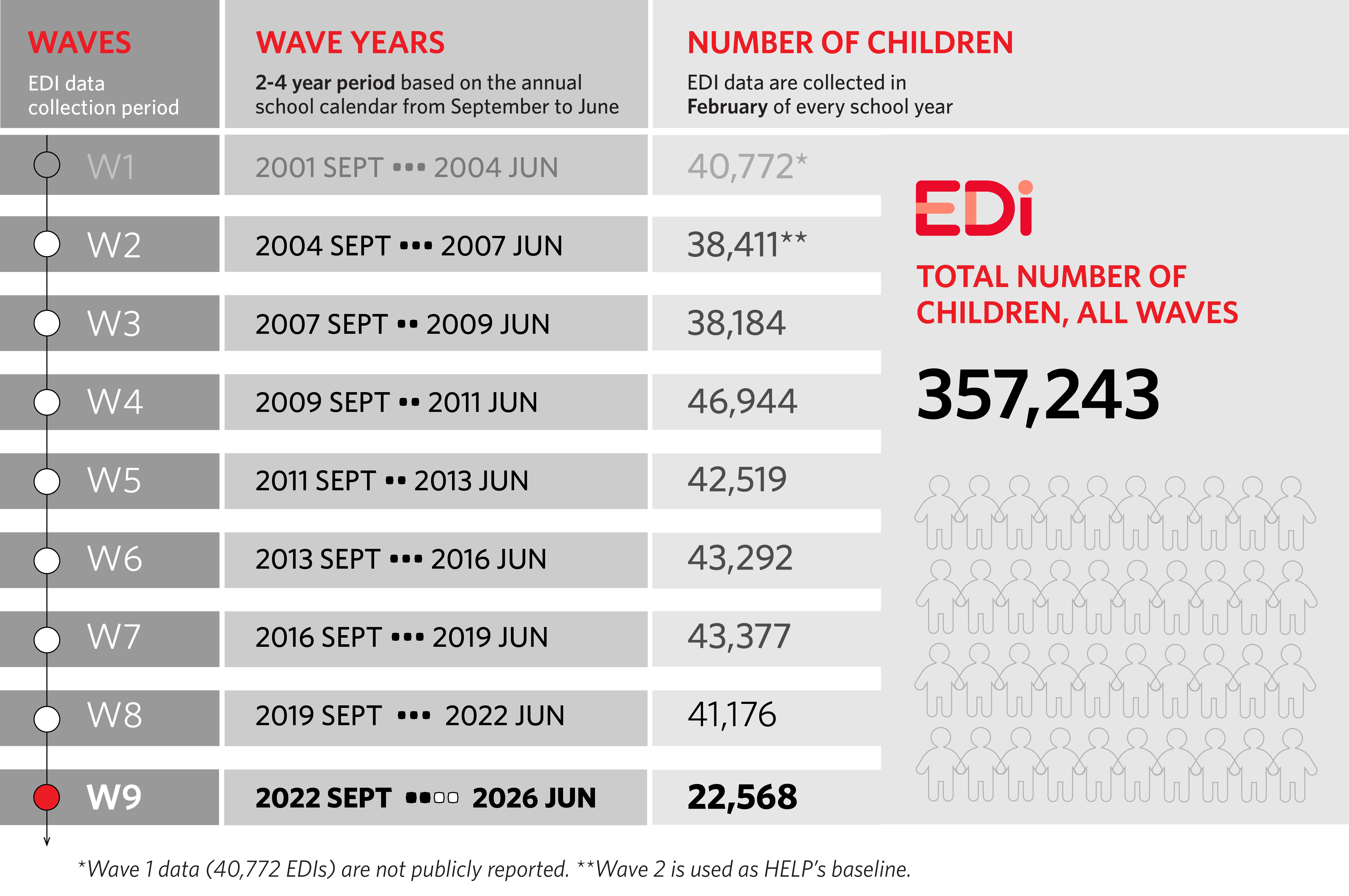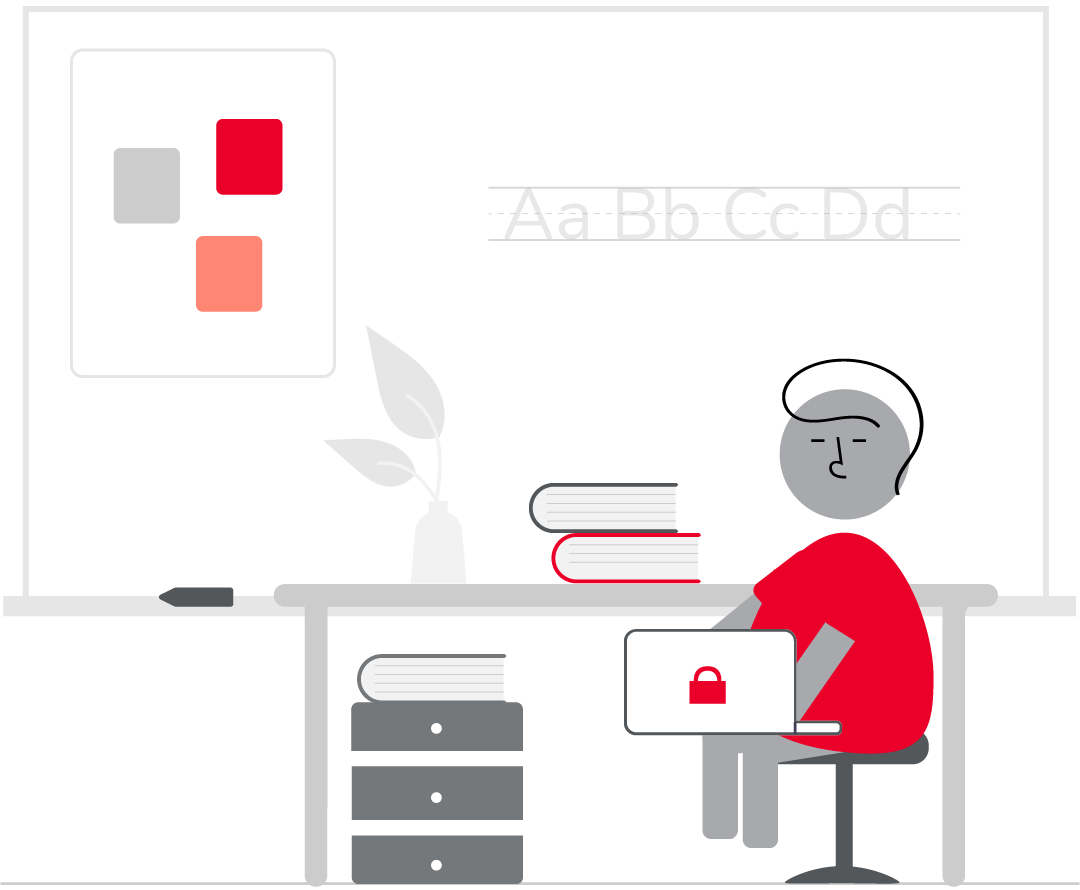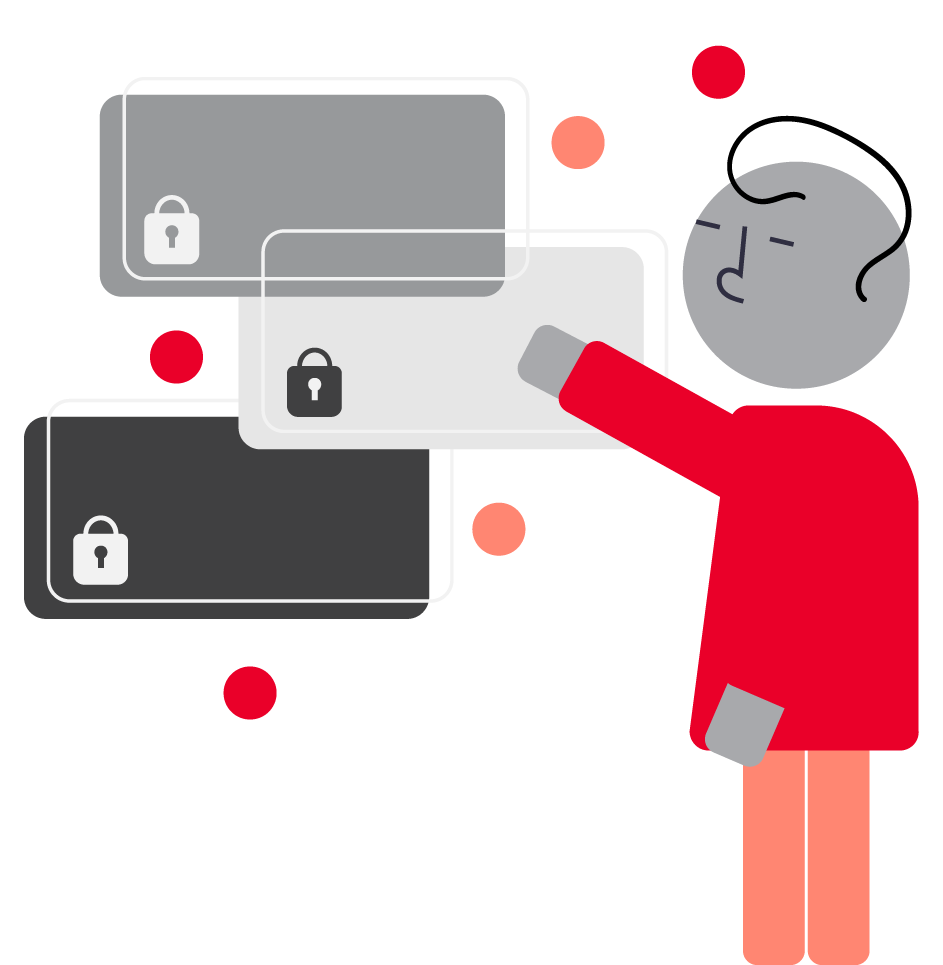
The Early Development Instrument: Data Collection

Since 2001, HELP has collected province-wide data for over 350,000 kindergarten children in BC through it's EDI data collection, creating a unique and world-class data set that is not available in most other provinces or countries.
EDI Completion
The EDI questionnaire is completed online by kindergarten teachers for the students in their classroom in February
All about child development
The EDI questionnaire has 103 core items covering five core areas of development
The EDI is Voluntary
Schools, teachers, and parents/ caregivers are able to choose whether or not they participate
EDI Collection
Over 330,000 EDIs collected in BC to date
EDI Data
20 years of data for children across 8 provincial waves of data collection in BC
EDI Across Canada
EDI has been implemented in 12 of 13 provinces and territories in Canada, with over 1.3 million EDIs collected
EDI Data Collection Timeline
The current cycle is Wave 9, which started in 2022/2023.
If you are an EDI School District Lead and need more information regarding your EDI data collection, go to the EDI Administration Blog.

How are data collected using the EDI?
Preparation for EDI Data Collection
The schedule for school district participation in a particular wave is decided by HELP and administrators from each school district. When a school district is scheduled to participate in the EDI that school year, a number of processes are put into motion for all involved parties, including:
- School districts provide HELP with an electronic list of kindergarten students attending that year, along with some associated demographic data (e.g., date of birth, gender);
- Kindergarten teachers participate in standardized training on how to complete the EDI; and
- Parents and caregivers of kindergarten students receive information letters about the upcoming EDI data collection.
EDI Adminstrative Timeline:

EDI Questionnaire Completion
The EDI questionnaire is completed by kindergarten teachers in February of the school year, for each student in their class. The questionnaire is completed online, based on the teachers’ daily observations of their students since the start of the school year. Teachers are compensated for the time needed to complete the EDI, either by receiving a payment based on the class size or time off in lieu. The data collected are stored in HELP’s secure e-system.
EDI is Voluntary, using Informed Passive Consent
Participation in the EDI is voluntary. Once a school district has signed on, schools, teachers, parents and caregivers are able to choose whether or not they participate. If parents or caregivers do not wish their child to participate in the EDI, they can inform their teacher or contact the EDI Implementation team directly.
The EDI uses informed passive consent to collect data. This means parents and caregivers are fully informed about the EDI project and the use of the data through information letters sent from HELP and the school district before the questionnaire is completed, but they do not have to actively complete a consent form.
Informed passive consent allows researchers to gather representative data for large populations — in this case with the EDI, for kindergarten students across BC. This is important to ensure the data accurately reflect what is happening in the lives of children and families in BC. As this study is considered low risk and provides beneficial community information, this consent model has been approved by the UBC Behavioural Research Ethics Board (BREB).
More information on the use of informed passive consent permission protocol for EDI can be found here.

How is the Information Collected by the EDI Protected?
To ensure personal information is secure, HELP has strong measures in place and follows all rules, agreements, practices, and legislation for safeguarding data. To learn more about HELP data protection and the Five Safes’ framework for HELP research, please visit our Safeguarding Data page.

Key EDI Contacts

Kate Buium
Senior Knowledge Broker, Knowledge-to-Action Team

Hui Shen
Data & Statistical Analyst

